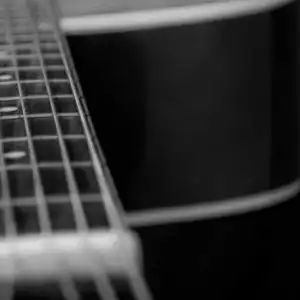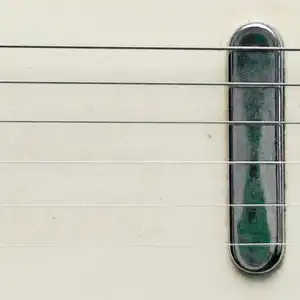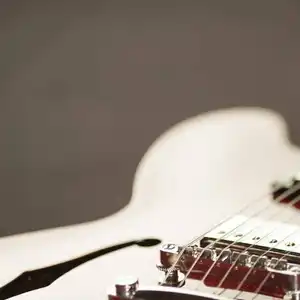New Standard Tuning 101: Robert Fripp's Alternate Tuning Explained


If you’ve ever felt like your guitar was holding you back, Robert Fripp—the famously meticulous guitar mastermind of King Crimson—has news for you: maybe it’s not you, maybe it’s the tuning.
Fripp’s “New Standard Tuning” (NST) isn’t just a quirky experiment; it’s a whole new way of looking at the instrument. Equal parts practical, theoretical, and mystical, NST has become one of the most fascinating alternate tunings in modern guitar history.
Let’s dive into how it came about, why it works the way it does, and how you can experiment with it yourself.

Where Did New Standard Tuning Come From?
Back in the 1980s, after decades of twisting guitars into wild shapes with King Crimson, Fripp wanted to break free from the limitations of traditional tuning (E–A–D–G–B–E). To him, the “standard” tuning wasn’t actually very standard at all—it was a compromise that made chord shapes easier at the expense of logic and musical symmetry.
Enter New Standard Tuning, officially introduced in 1984 as part of Fripp’s Guitar Craft courses. Students who signed up were instructed to tune up to something very different than standard:
C – G – D – A – E – G (low to high).
At first glance, it sure looks strange. But with a bit of patience, you'll begin to see its genius.
Why Did Fripp Develop NST?
Fripp’s reasoning was both philosophical and practical:
More Range – By starting on a low C (instead of low E), the guitar immediately covers more sonic ground, almost like borrowing from a baritone guitar.
Logical Intervals – The strings are mostly tuned in perfect fifths, which makes the fretboard layout cleaner and more consistent than the standard tuning’s mix of fourths and a lone third.
Fresh Ears, Fresh Hands – Fripp believed that re-tuning forces guitarists out of their muscle memory. No more “default” pentatonic noodling—you actually have to listen and think.
Simply put? It was one heck of a way to blow dust off the guitar and look at it in a whole new way.
How Does New Standard Tuning Work?
Think of the guitar like a ladder of notes. In standard tuning, the steps between strings are uneven—four frets here, five frets there, then three for the B string. NST straightens that ladder.
- From C to G = Perfect fifth
- G to D = Perfect fifth
- D to A = Another fifth
- A to E = You guessed it...
- E to G = A minor third! The one exception =]
So you’ve basically got a fifths-based system similar to what you'd find on a violin, cello, or mandolin, capped by a high G for playability.
What Does It Sound Like?
The sound is big, open, and orchestral. The wide spacing between notes means chords ring out in dramatic, modern voicings that don’t sound like the campfire strumming of standard tuning.
Want an easy example? Place a simple shape like this:
You’ll get a lush, almost piano-like chord without much effort. It’s one reason Fripp loved it—suddenly, the guitar was more than just a rock instrument.
While NST hasn't exactly cracked the mainstream in the same way as open tunings like DADGAD, it has shown up in notable places, particularly King Crimson itself. Fripp used NST extensively in the band’s 1980s and 1990s incarnations. Tracks like "Three of a Perfect Pair" showcase the tuning's angular, crystalline guitar sound.
Guitar Craft Alumni such as Trey Gunn (also in King Crimson) and Markus Reuter have continued to use NST in their solo work. So, while it may not dominate the Top 40, NST has carved out a real legacy in progressive and experimental circles.

Why It’s Easier Than You Might Think (Music Theory in Plain English)
Music theory can be intimidating, but here’s the simplest way to picture NST:
Fifths stack nicely. Each time you move up a string, you’re skipping half the scale. This creates huge, clean gaps between notes.
Chord shapes look new. Forget cowboy chords—here, you build voicings like you’re arranging for strings or piano.
Melodies fall into place. Because fifths are symmetrical, scales feel less awkward to play. It’s like sliding diagonally across the fretboard instead of zigzagging.
The only “weird” part is the top G string, but that’s there to save your fingers from breaking when trying to hit a higher B.
Strings for NST
Want to dabble in New Standard Tuning? Refer to the gauges in our article and grab a custom set!

Stringjoy Custom 6 String Signatures - Nickel Wound Electric Guitar Strings

Stringjoy Custom 6 String Naturals - Phosphor Bronze Acoustic Guitar Strings

Stringjoy Custom 6 String Foxwoods - Coated Phosphor Bronze Acoustic Guitar Strings

Stringjoy Custom Broadways - Pure Nickel Electric Guitar Strings
Strings for New Standard Tuning
So you’re curious about trying it? Great! The awesome news it the guitar you already own should work perfectly (though longer scale lengths work best if you want truly thunderous low notes). What you will want to consider are your strings... and that's where we come in!
NST puts very different demands on strings than standard tuning. Low C requires a heavier gauge to avoid floppiness (think .054 or higher).
The high G, on the other hand, needs to stay playable—something between a .0085 and .010 will work best on electric, with .010 or .011 getting you there on acoustic.
Of course at Stringjoy we make custom sets where you can balance tension across all six strings for NST specifically.
Those sets might look like....
Electric: .0085 - .010 - .015 - .026w - .038 - .056
Acoustic: .010 - .012 - .020w - .032 - .044 - .056
(Bonus fun gear tip -- consider your rig! NST’s wide voicings shine when you use clean or lightly overdriven tones. Think chime, shimmer, and clarity.)
Should You Try It?
NST may not be for everyone. If you just want to rip blues licks, you might feel lost at first. But if you’re itching to break free from old habits, it’s a fantastic way to rediscover the guitar.
As Robert Fripp himself might put it: “When we tune differently, we listen differently.”
Other Posts you may like

Guitar Strings Order: How the Guitar is Tuned and Why

Two Handed Tapping: Our Top 8 Tappers of All Time

Which Guitar Strings Wear Your Fret Wire Down More?

What is Nashville Tuning? Its History, Best Guitar Strings & Uses

Guitar Scale Length Explained: String Tension & Playability

What Guitar Strings I Used To Play...
0 Responses
Leave a Reply
Your email address will not be published. Required fields are marked *

